 Search by Keyword
Sign Up Below for our MONTHLY BEATLES TRIVIA QUIZ!
|
"SLOW DOWN"
(Larry Williams)
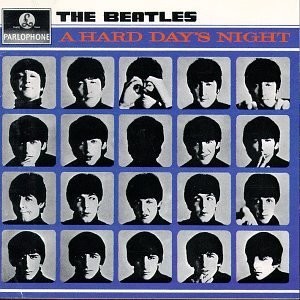 The British "A Hard Day's Night" album was the first Beatles album to consist entirely of original compositions and the only Beatles album to be entirely written by Lennon and McCartney. This may have been what it turned out to be, but it most likely was not as intended. During the sessions that made up this album, they had already recorded a favorite rock'n'roll chestnut "Long Tall Sally." And on what turned out to be the next to last recording session for the album, they recorded Carl Perkins' classic "Matchbox" and a favorite of John's from the early Beatles days, the Larry Williams rocker "Slow Down." The British "A Hard Day's Night" album was the first Beatles album to consist entirely of original compositions and the only Beatles album to be entirely written by Lennon and McCartney. This may have been what it turned out to be, but it most likely was not as intended. During the sessions that made up this album, they had already recorded a favorite rock'n'roll chestnut "Long Tall Sally." And on what turned out to be the next to last recording session for the album, they recorded Carl Perkins' classic "Matchbox" and a favorite of John's from the early Beatles days, the Larry Williams rocker "Slow Down."
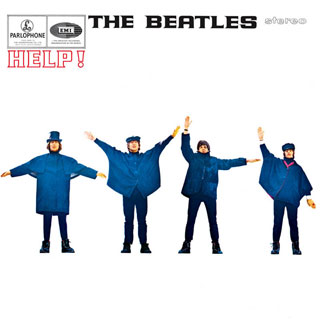 Being that the British album ended up being one song short of the usual fourteen tracks, any one of these cover versions could have easily fit onto the disc. In 1965 The Beatles released their second film soundtrack "Help!," which would also have been entirely made up of original songs had it not been for the last minute inclusion of two cover songs, one of which was another Larry Williams rocker "Dizzy Miss Lizzy." Being that the British album ended up being one song short of the usual fourteen tracks, any one of these cover versions could have easily fit onto the disc. In 1965 The Beatles released their second film soundtrack "Help!," which would also have been entirely made up of original songs had it not been for the last minute inclusion of two cover songs, one of which was another Larry Williams rocker "Dizzy Miss Lizzy."
 But as it turned out, George Martin decided he'd rather have the album one song short in order to say it was made up entirely of all Beatles-written material. The three cover versions recorded during these sessions, along with John's song "I Call Your Name," were instead released on a British EP entitled "Long Tall Sally," which sold extremely well in their home country. All in all, it proved to be a wise choice. But as it turned out, George Martin decided he'd rather have the album one song short in order to say it was made up entirely of all Beatles-written material. The three cover versions recorded during these sessions, along with John's song "I Call Your Name," were instead released on a British EP entitled "Long Tall Sally," which sold extremely well in their home country. All in all, it proved to be a wise choice.
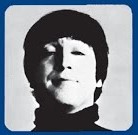 However, in America it was quite a different scenario. We were doubly treated to the song "Slow Down" as an album track on the highly successful "Something New" album and as a hit single. So although Larry Williams may have already been largely forgotten in America by the summer of 1964, his music lived on as re-created by the most popular rock band of our time. However, in America it was quite a different scenario. We were doubly treated to the song "Slow Down" as an album track on the highly successful "Something New" album and as a hit single. So although Larry Williams may have already been largely forgotten in America by the summer of 1964, his music lived on as re-created by the most popular rock band of our time.
Songwriting History
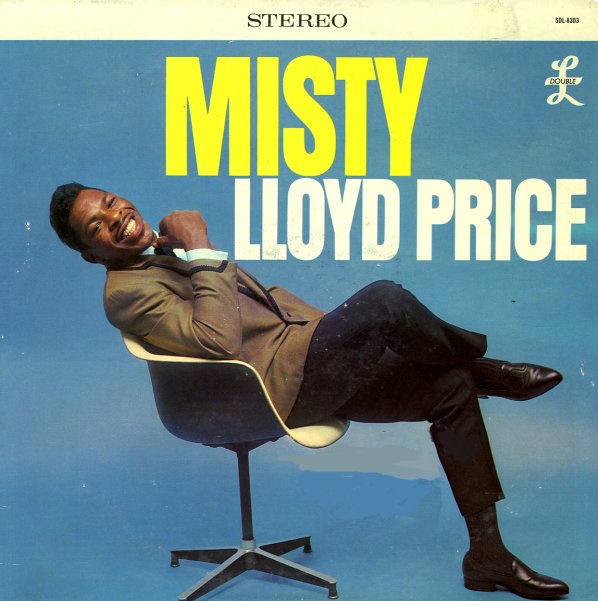 Born on May 10th, 1935, Larry Williams leaned to play the piano as a child in his home town of New Orleans, Louisiana. When his family moved to Oakland, California when he was a teenager, he continued his love of music in a band called The Lemon Drops and then moved back to New Orleans in 1954 at the age of 19 to pursue a music career in earnest. He got his foot in the door by becoming a chauffeur for singer Lloyd Price who then let Larry Williams become a member of his band. Born on May 10th, 1935, Larry Williams leaned to play the piano as a child in his home town of New Orleans, Louisiana. When his family moved to Oakland, California when he was a teenager, he continued his love of music in a band called The Lemon Drops and then moved back to New Orleans in 1954 at the age of 19 to pursue a music career in earnest. He got his foot in the door by becoming a chauffeur for singer Lloyd Price who then let Larry Williams become a member of his band.
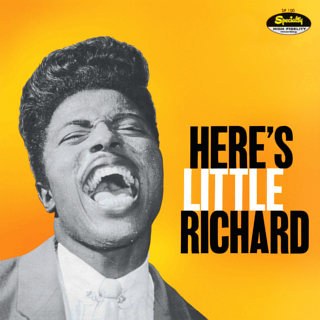 Specialty Records, who had become known for signing Little Richard, signed Larry Williams to the label to be groomed as Little Richard's replacement since he was leaving music to pursue his ministry at the time. After scoring a respectable #11 hit on the Billboard R&B charts with his first release "Just Because," Larry Williams hit it big with his second Little Richard-like single "Short Fat Fannie." It peaked at #1 on the R&B charts and #5 on the US Billboard singles chart in the summer of 1957. Specialty Records, who had become known for signing Little Richard, signed Larry Williams to the label to be groomed as Little Richard's replacement since he was leaving music to pursue his ministry at the time. After scoring a respectable #11 hit on the Billboard R&B charts with his first release "Just Because," Larry Williams hit it big with his second Little Richard-like single "Short Fat Fannie." It peaked at #1 on the R&B charts and #5 on the US Billboard singles chart in the summer of 1957.
He continued his streak with his third single "Bony Maronie," which made it up to #4 on the R&B charts and #14 on the US Billboard singles chart, while the b-side, "You Bug Me Baby," almost made the American Top 40 as well (#45).
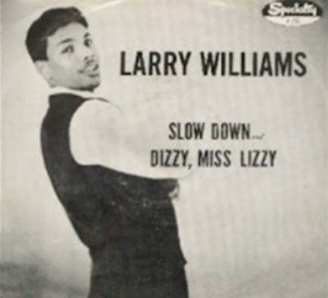 Unfortunately, this is where Larry Williams' chart success stopped. His fourth single "Dizzy Miss Lizzy," released in March of 1958, only made it as far as #69 on the Billboard singles chart, bringing his impending rock'n'roll career to a screeching halt. Although he saw even less chart action in Britain, The Beatles were great fans. This failed single, as well as its b-side "Slow Down" (which had been intended as the a-side), was a favorite of John Lennon in particular. Both of these tracks, as well as four other Larry Williams songs, were favorites of The Beatles in their long sets at the Cavern Club, in Hamburg and all points in between. Unfortunately, this is where Larry Williams' chart success stopped. His fourth single "Dizzy Miss Lizzy," released in March of 1958, only made it as far as #69 on the Billboard singles chart, bringing his impending rock'n'roll career to a screeching halt. Although he saw even less chart action in Britain, The Beatles were great fans. This failed single, as well as its b-side "Slow Down" (which had been intended as the a-side), was a favorite of John Lennon in particular. Both of these tracks, as well as four other Larry Williams songs, were favorites of The Beatles in their long sets at the Cavern Club, in Hamburg and all points in between.
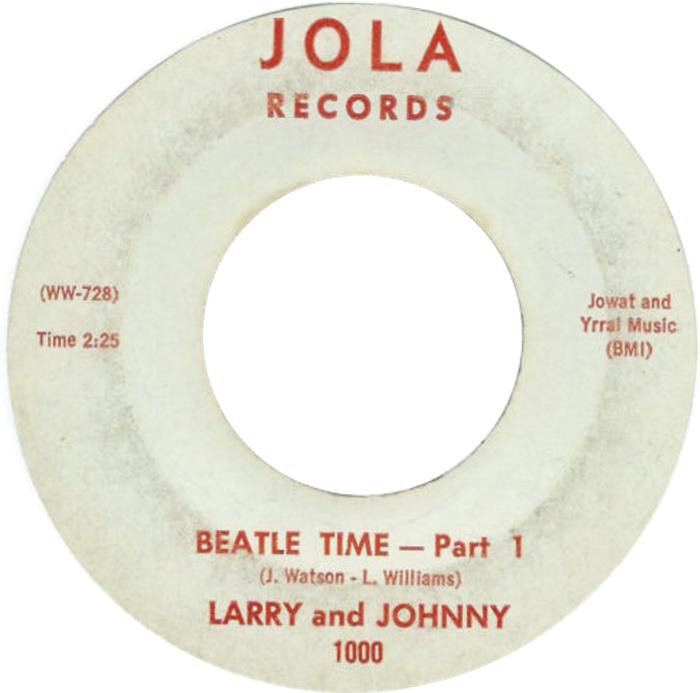 Although Larry Williams tried repeatedly to revive his career, even recording a single with Johnny "Guitar" Watson in 1964 called "Beatle Time" under the name Larry and Johnny, he failed to make any serious dent on either the US or British charts. An underlying problem which stemmed back to his teenage years was his connections with the underworld, reportedly working as a pimp in his pre-music years. After serving a jail term in 1960 for dealing in narcotics, he continued to be involved in that lifestyle. Although Larry Williams tried repeatedly to revive his career, even recording a single with Johnny "Guitar" Watson in 1964 called "Beatle Time" under the name Larry and Johnny, he failed to make any serious dent on either the US or British charts. An underlying problem which stemmed back to his teenage years was his connections with the underworld, reportedly working as a pimp in his pre-music years. After serving a jail term in 1960 for dealing in narcotics, he continued to be involved in that lifestyle.
In 1977 he threatened Little Richard with a gun because of a drug debt, but let him go. Nearly three years later, on January 7th, 1980, Larry Williams was found dead from a gun-shot wound in his Los Angeles home. Although it was ruled a suicide, great speculation existed because of his drug-dealing and underworld ties.
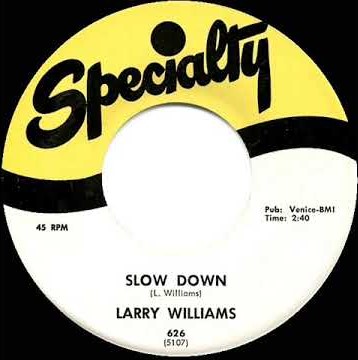 The song "Slow Down" was written as a high energy rocker with the intention of mimicking the "wild party" atmosphere created by his friend and mentor Little Richard. Larry Williams' arrangement and recording of the song, with its whistling introduction and frantic piano and sax duality, created a manic frenzy that threatens to never give up. The song "Slow Down" was written as a high energy rocker with the intention of mimicking the "wild party" atmosphere created by his friend and mentor Little Richard. Larry Williams' arrangement and recording of the song, with its whistling introduction and frantic piano and sax duality, created a manic frenzy that threatens to never give up.
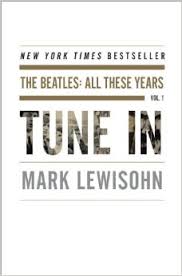 Listening to the original, we can see how Lennon would view this song as irresistible and worthy of covering by The Beatles. However, it took some ingenuity for them to learn the proper lyrics of the song in those days. In an interview with Mark Lewisohn for his book "Tune In," Ted "King-Size" Taylor from the rival Liverpool group The Dominoes remembers that The Beatles "all sat in a row and took down one line each of all the songs we did - 'Dizzy Miss Lizzy,' 'Slow Down,' 'Money,' all of those - and the next time we saw them they were playing all our stuff." Listening to the original, we can see how Lennon would view this song as irresistible and worthy of covering by The Beatles. However, it took some ingenuity for them to learn the proper lyrics of the song in those days. In an interview with Mark Lewisohn for his book "Tune In," Ted "King-Size" Taylor from the rival Liverpool group The Dominoes remembers that The Beatles "all sat in a row and took down one line each of all the songs we did - 'Dizzy Miss Lizzy,' 'Slow Down,' 'Money,' all of those - and the next time we saw them they were playing all our stuff."
Recording History
.jpg) The first time The Beatles recorded "Slow Down" was, interestingly, not at EMI Studios nor for the purpose of record release. It was instead to revive one of their early concert songs for broadcast on BBC radio in the tenth edition of their series "Pop Go The Beatles." This recording session took place on July 16th, 1963 at BBC Paris Studio in London between 8:45 and 10:30 pm, this being the last of seventeen songs they recorded on this day for three editions of the "Pop Go The Beatles" series. The session was produced by Terry Heneberry and was broadcast on August 20th, 1963 between 5 and 5:29 pm. The first time The Beatles recorded "Slow Down" was, interestingly, not at EMI Studios nor for the purpose of record release. It was instead to revive one of their early concert songs for broadcast on BBC radio in the tenth edition of their series "Pop Go The Beatles." This recording session took place on July 16th, 1963 at BBC Paris Studio in London between 8:45 and 10:30 pm, this being the last of seventeen songs they recorded on this day for three editions of the "Pop Go The Beatles" series. The session was produced by Terry Heneberry and was broadcast on August 20th, 1963 between 5 and 5:29 pm.
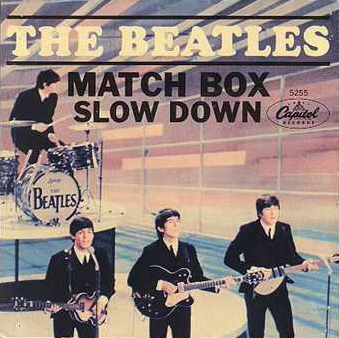 After filming was complete for their movie "A Hard Day's Night," and after a well deserved month-long vacation, The Beatles returned to EMI Studio Two on June 1st, 1964 with the intention of completing their British soundtrack album. Two sessions were booked for this day, the first running from 2:30 to 5:30 pm. After fully recording "Matchbox" and "I'll Cry Instead," they began work on recording an official version of "Slow Down" at approximately 5 pm. After filming was complete for their movie "A Hard Day's Night," and after a well deserved month-long vacation, The Beatles returned to EMI Studio Two on June 1st, 1964 with the intention of completing their British soundtrack album. Two sessions were booked for this day, the first running from 2:30 to 5:30 pm. After fully recording "Matchbox" and "I'll Cry Instead," they began work on recording an official version of "Slow Down" at approximately 5 pm.
Unlike their usual pattern, they concentrated first on recording a rhythm track with instruments only (guitars, bass and drums) without any vocals. Their third attempt was the keeper, and from "take three" they commenced adding overdubs.
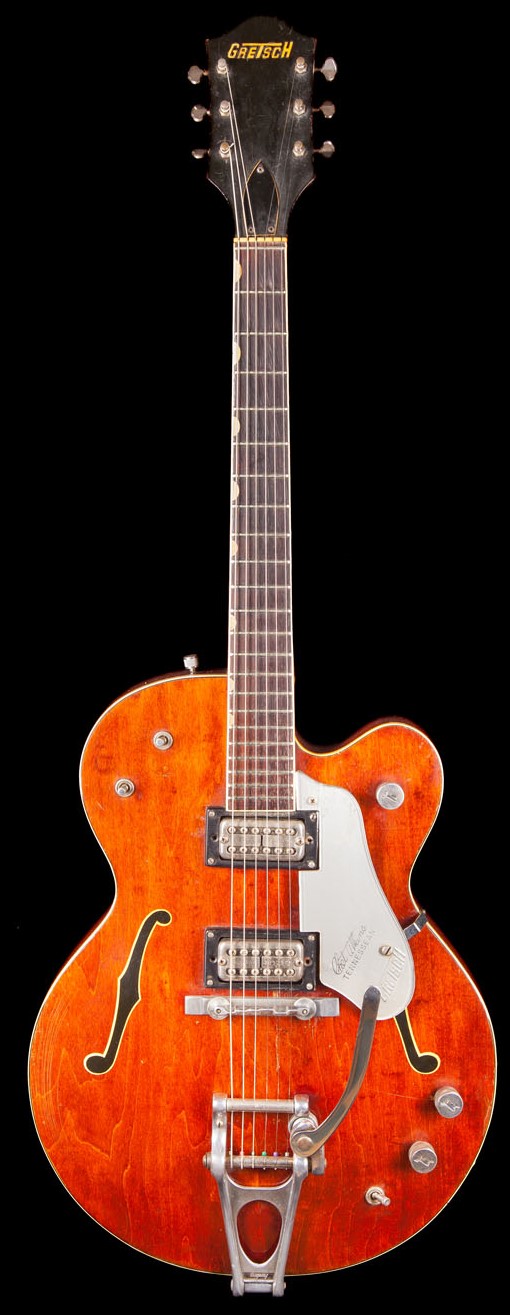 First on the agenda were George Harrison's guitar accents throughout the song as well as his solo. He seemed to have had a hard time nailing down his part, evidenced by his awkward attempts at hitting his accents at the beginning of the fifth, sixth and ninth measures of the introduction. His solo also comes across quite rusty, probably owing to the fact that, while The Beatles performed the song very regularly in their early career, they most likely hadn't touched the song since July 16th, 1963 when they recorded it for BBC radio. First on the agenda were George Harrison's guitar accents throughout the song as well as his solo. He seemed to have had a hard time nailing down his part, evidenced by his awkward attempts at hitting his accents at the beginning of the fifth, sixth and ninth measures of the introduction. His solo also comes across quite rusty, probably owing to the fact that, while The Beatles performed the song very regularly in their early career, they most likely hadn't touched the song since July 16th, 1963 when they recorded it for BBC radio.
Then John tackled his raucous lead vocal, doing his best to imitate his hero's screams and vocal mannerisms to the tee. He then double-tracked the vocals in order to add more depth, which took the song to "take six."
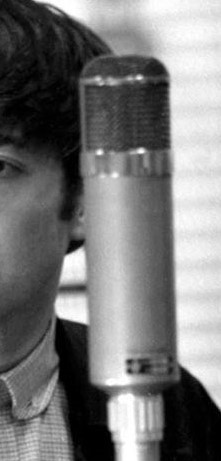 Since double-tracking vocals was never Lennon's strong suit, there are quite a few noticeable discrepancies between the two vocal tracks he recorded. First of all, during the "break" in the tenth measure of the first verse, John has to keep time in his head while singing the line "if you want our love to last." He sped up the tempo slightly, which creates a noticeable gap when Ringo comes back in on the drums. Since double-tracking vocals was never Lennon's strong suit, there are quite a few noticeable discrepancies between the two vocal tracks he recorded. First of all, during the "break" in the tenth measure of the first verse, John has to keep time in his head while singing the line "if you want our love to last." He sped up the tempo slightly, which creates a noticeable gap when Ringo comes back in on the drums.
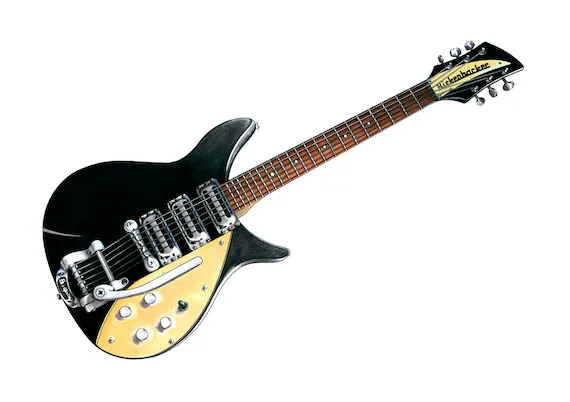 There are other times that his inflections don't match and he even sings the words differently on occasion. For instance, during the second verse he sings "now you've got a girlfriend down the street" on one track while he apparently sings "now you don't care a dime for me" on the other track. This second lyric, which he sang in the BBC version back in 1963, is not in the original song. Nor is the whole third verse, which John apparently made up himself. (For the record, the line is actually "now you've got a boyfriend down the street" and John's replacement line is a variation of a line Larry Williams sings in the last verse, which goes "don't start nothing, now, you're life ain't worth a dime.") There are other times that his inflections don't match and he even sings the words differently on occasion. For instance, during the second verse he sings "now you've got a girlfriend down the street" on one track while he apparently sings "now you don't care a dime for me" on the other track. This second lyric, which he sang in the BBC version back in 1963, is not in the original song. Nor is the whole third verse, which John apparently made up himself. (For the record, the line is actually "now you've got a boyfriend down the street" and John's replacement line is a variation of a line Larry Williams sings in the last verse, which goes "don't start nothing, now, you're life ain't worth a dime.")
 One fortunate accident made in John's double-tracking is found at the end of the fourth measure of the third verse where he actually harmonizes with himself. His blood-curdling scream at the end of the second verse is another positive evidence of John's double-tracking, as it threatens to rip our speakers at that point in the song. One fortunate accident made in John's double-tracking is found at the end of the fourth measure of the third verse where he actually harmonizes with himself. His blood-curdling scream at the end of the second verse is another positive evidence of John's double-tracking, as it threatens to rip our speakers at that point in the song.
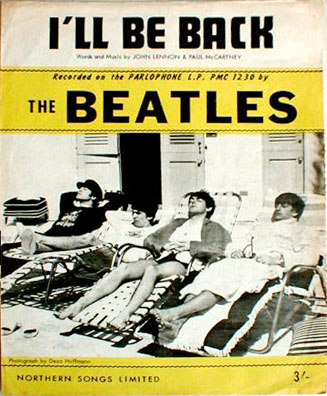 After approximately a half-hour of recording, the song was deemed complete for the time being. Although many flaws were in evidence, they apparently wanted the song to be complete at the end of the first session that day. This freed them up to work exclusively on John's new composition "I'll Be Back" in the evening session. After approximately a half-hour of recording, the song was deemed complete for the time being. Although many flaws were in evidence, they apparently wanted the song to be complete at the end of the first session that day. This freed them up to work exclusively on John's new composition "I'll Be Back" in the evening session.
 June 4th, 1964 played a dual role concerning "Slow Down." George Martin and engineers Norman Smith and Richard Langham met in EMI Studio Two for performing mono mixes of recently recorded Beatles songs. But before a mix could be made for "Slow Down," George Martin needed to add one further element. He recorded himself playing a piano overdub onto the entire song, giving it a well-needed 'driving' feel. Ever the perfectionist, his timing was dead-on for the introduction, which must have been quite difficult, since he actually appears to be starting off the song even though the rest of the band recorded their part three days before! June 4th, 1964 played a dual role concerning "Slow Down." George Martin and engineers Norman Smith and Richard Langham met in EMI Studio Two for performing mono mixes of recently recorded Beatles songs. But before a mix could be made for "Slow Down," George Martin needed to add one further element. He recorded himself playing a piano overdub onto the entire song, giving it a well-needed 'driving' feel. Ever the perfectionist, his timing was dead-on for the introduction, which must have been quite difficult, since he actually appears to be starting off the song even though the rest of the band recorded their part three days before!
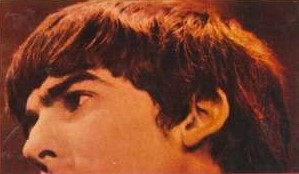 Right after his piano part was complete, the EMI team created the mono mix that appeared throughout the world. They kept George Harrison's overdubbed guitar part very low in the mix for the first four measures of the song but lifted the volume just in time to hear his flubs begin with the fifth measure. They also decided to make sure to keep one of John's vocal tracks down at the end of the song just before the last guitar flourish so that John's "ow" wouldn't be heard. Right after his piano part was complete, the EMI team created the mono mix that appeared throughout the world. They kept George Harrison's overdubbed guitar part very low in the mix for the first four measures of the song but lifted the volume just in time to hear his flubs begin with the fifth measure. They also decided to make sure to keep one of John's vocal tracks down at the end of the song just before the last guitar flourish so that John's "ow" wouldn't be heard.
 The stereo mix of the song was created in a marathon mixing session on June 22nd, 1964 by George Martin, Norman Smith and 2nd engineer Geoff Emerick. As usual for stereo mixes, less care was taken this time around, as we see George Harrison's guitar overdub very prominent in the mix as well as the final "ow" at the end of the song. They also prepared a tape copy of the mono mix of the song at the end of the session, presumably for sending to Capitol Records in the US. The stereo mix of the song was created in a marathon mixing session on June 22nd, 1964 by George Martin, Norman Smith and 2nd engineer Geoff Emerick. As usual for stereo mixes, less care was taken this time around, as we see George Harrison's guitar overdub very prominent in the mix as well as the final "ow" at the end of the song. They also prepared a tape copy of the mono mix of the song at the end of the session, presumably for sending to Capitol Records in the US.
Song Structure and Style
This song is patterned on the usual 12-bar blues format, but in the extended relaxed style which actually appears to double the length of the measures. (For example, notice how long it takes to get through a verse in this song as opposed to "Matchbox.") As most traditional 12-bar blues songs go, the structure is made up of all verses but this time with an introduction and solo which also follow the same chord progression.
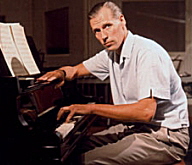 The introduction actually starts out with George Martin's overdubbed piano before the one-beat of the first measure. The band kicks in at the beginning of the first measure and plays through a full verse chord progression without so much of a guitar or piano solo, only vamping and slight guitar flourishes. While this is quite different from anything The Beatles would normally write or perform, they do this as an attempt to keep loyal to the original Larry Williams arrangement. Only the repeated boogie-style ostinato riff, played simultaneously by guitar, piano and bass, propels the song along. George Harrison's overdubbed guitar pushes on the one-beat of each measure attempts to add flavor, but at times only cheapens the overall affect. The introduction actually starts out with George Martin's overdubbed piano before the one-beat of the first measure. The band kicks in at the beginning of the first measure and plays through a full verse chord progression without so much of a guitar or piano solo, only vamping and slight guitar flourishes. While this is quite different from anything The Beatles would normally write or perform, they do this as an attempt to keep loyal to the original Larry Williams arrangement. Only the repeated boogie-style ostinato riff, played simultaneously by guitar, piano and bass, propels the song along. George Harrison's overdubbed guitar pushes on the one-beat of each measure attempts to add flavor, but at times only cheapens the overall affect.
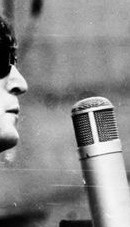 The excitement truly begins in the next section, which is actually the first verse. Lennon's aggressive but self-mocking double-tracked vocals finally kick in to tell his story. There are a few differences between the introduction and the verses. First of all, we have a full band "break" in the fourth measure which allows John to belt out his major concern to "try and save our romance." The second difference is another identical "break" in the tenth measure with the equally important lyrics "if you want our love to last." But before the second break occurs, The Beatles change chords more quickly than the original does in order to land on the home key in time for this second "break." This is probably an example of being so familiar with the song throughout the years that they failed to realize they learned it wrong. The excitement truly begins in the next section, which is actually the first verse. Lennon's aggressive but self-mocking double-tracked vocals finally kick in to tell his story. There are a few differences between the introduction and the verses. First of all, we have a full band "break" in the fourth measure which allows John to belt out his major concern to "try and save our romance." The second difference is another identical "break" in the tenth measure with the equally important lyrics "if you want our love to last." But before the second break occurs, The Beatles change chords more quickly than the original does in order to land on the home key in time for this second "break." This is probably an example of being so familiar with the song throughout the years that they failed to realize they learned it wrong.
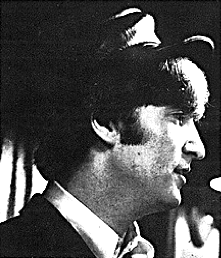 Another identical verse then occurs, but with the conflicting overdubbed vocal lines in the third measure as described above. The second "break" in this verse features John mimicking Larry Williams' trademark "brrrr" to hilarious effect. The last measure of this second verse features the gut-wrenching and ear-splitting double-tracked scream that ushers in the guitar solo heard next. Another identical verse then occurs, but with the conflicting overdubbed vocal lines in the third measure as described above. The second "break" in this verse features John mimicking Larry Williams' trademark "brrrr" to hilarious effect. The last measure of this second verse features the gut-wrenching and ear-splitting double-tracked scream that ushers in the guitar solo heard next.
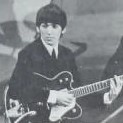 While George Harrison's guitar solo is ad-libbed and had nothing much to use as a model (since the original version had a sax solo), he worked out standard rock'n'roll / rockabilly guitar phrases and gimmicks heard elsewhere, such as played by his heroes Carl Perkins and Chuck Berry. While somewhat awkwardly played, the half-hour time frame deemed the solo "good enough." While George Harrison's guitar solo is ad-libbed and had nothing much to use as a model (since the original version had a sax solo), he worked out standard rock'n'roll / rockabilly guitar phrases and gimmicks heard elsewhere, such as played by his heroes Carl Perkins and Chuck Berry. While somewhat awkwardly played, the half-hour time frame deemed the solo "good enough."
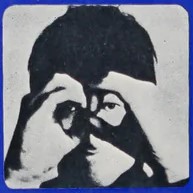 The third and final verse is preceded by John's wailing "welllllll" which ushers in lyrics that Lennon apparently made up himself since the original has a completely different set of lyrics. In fact, the version they recorded for BBC radio in July of 1963 just repeated the first verse after the solo. It also features the unintelligible lyrics which, when double-tracked, appear to say "I need your body, baby, oh so bad" in the third measure. This could have meant to be "I need your loving" but was flubbed during double-tracking. The third and final verse is preceded by John's wailing "welllllll" which ushers in lyrics that Lennon apparently made up himself since the original has a completely different set of lyrics. In fact, the version they recorded for BBC radio in July of 1963 just repeated the first verse after the solo. It also features the unintelligible lyrics which, when double-tracked, appear to say "I need your body, baby, oh so bad" in the third measure. This could have meant to be "I need your loving" but was flubbed during double-tracking.
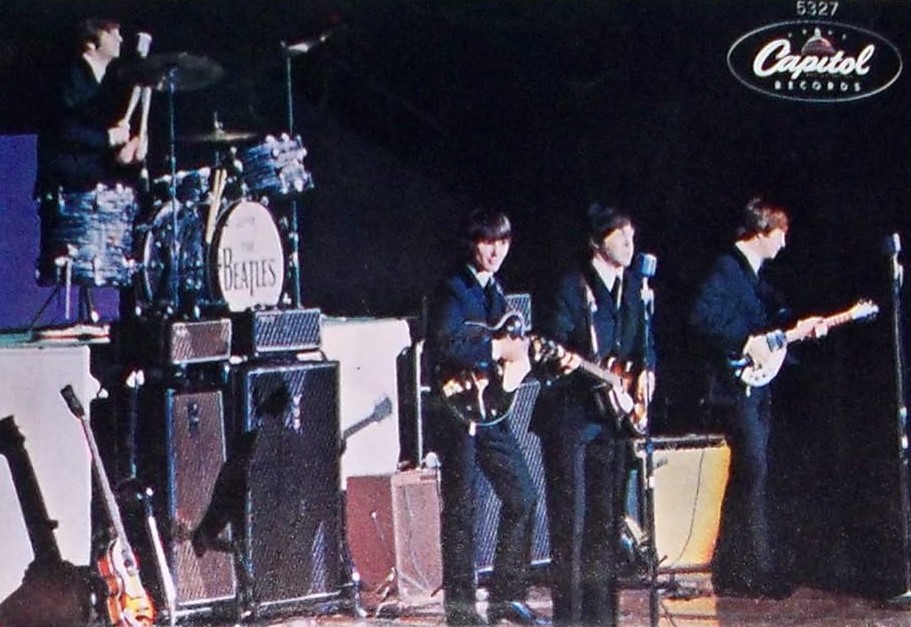 John then wisely opts to go back to his "owww" in the final break in the song instead of repeating the "brrrr" Larry Williams sings in the original. Then we hear a standard bluesy conclusion with John giving out a final yelping "wooo" as a brow-wiping final word. So ends The Beatles rendition of a classic piece of '50s rock 'n' roll. John then wisely opts to go back to his "owww" in the final break in the song instead of repeating the "brrrr" Larry Williams sings in the original. Then we hear a standard bluesy conclusion with John giving out a final yelping "wooo" as a brow-wiping final word. So ends The Beatles rendition of a classic piece of '50s rock 'n' roll.
 While Lennon's rhythm guitar acts appropriately to fill out the sound, his vocals are what make the song work. His enthusiasm to recreate this rock chestnut comes across with much passion and bravado. It's as if he were showing the world that this is what rock music is all about. While there is a degree of 'tounge-in-cheekness' to the delivery, his desperation and drive brings "Slow Down" into the realms of being one of the most intense vocal deliveries he's ever performed. While Lennon's rhythm guitar acts appropriately to fill out the sound, his vocals are what make the song work. His enthusiasm to recreate this rock chestnut comes across with much passion and bravado. It's as if he were showing the world that this is what rock music is all about. While there is a degree of 'tounge-in-cheekness' to the delivery, his desperation and drive brings "Slow Down" into the realms of being one of the most intense vocal deliveries he's ever performed.
George Harrison's work on the song amounts to the best he could do within a half-hour time frame. He usually had more time to perfect his parts and, under the circumstances, he comes across proficient enough to get by.
 Paul does well to help drive the song along with his proficient boogie-style bass riff played consistently through the track in parallel with the guitar and piano. While he may be quite low in the mix, his presence is felt. Ringo's sizzling hi-hat also creates the perfect backdrop to the song while mixing up his re-introductory drum fills in the "breaks" to add spice to the proceedings. Not to be forgotten is the classically trained George Martin on piano who, while not playing his part until three days later, sounds as if he's the guy holding the whole thing together. Paul does well to help drive the song along with his proficient boogie-style bass riff played consistently through the track in parallel with the guitar and piano. While he may be quite low in the mix, his presence is felt. Ringo's sizzling hi-hat also creates the perfect backdrop to the song while mixing up his re-introductory drum fills in the "breaks" to add spice to the proceedings. Not to be forgotten is the classically trained George Martin on piano who, while not playing his part until three days later, sounds as if he's the guy holding the whole thing together.
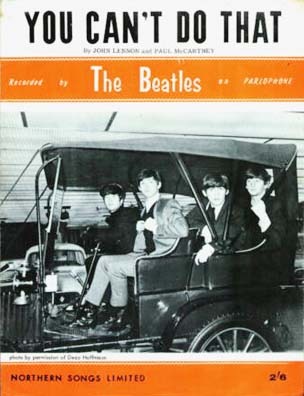 Lyrically the song fits a similar bill with John Lennon's "You Can't Do That" being that the singer is jealous of attention his girl is giving to others. The difference, though, is that in John's song the singer is threatening his girl with 'leaving her flat' if she doesn't stop, while in "Slow Down," the singer is urgently pleading with her to stop 'moving so fast.' With phrases like "c'mon pretty baby, won't you talk with me" and "gimme one more chance," he's showing his insecurities about whether she'll be distracted away from him by another. Lyrically the song fits a similar bill with John Lennon's "You Can't Do That" being that the singer is jealous of attention his girl is giving to others. The difference, though, is that in John's song the singer is threatening his girl with 'leaving her flat' if she doesn't stop, while in "Slow Down," the singer is urgently pleading with her to stop 'moving so fast.' With phrases like "c'mon pretty baby, won't you talk with me" and "gimme one more chance," he's showing his insecurities about whether she'll be distracted away from him by another.
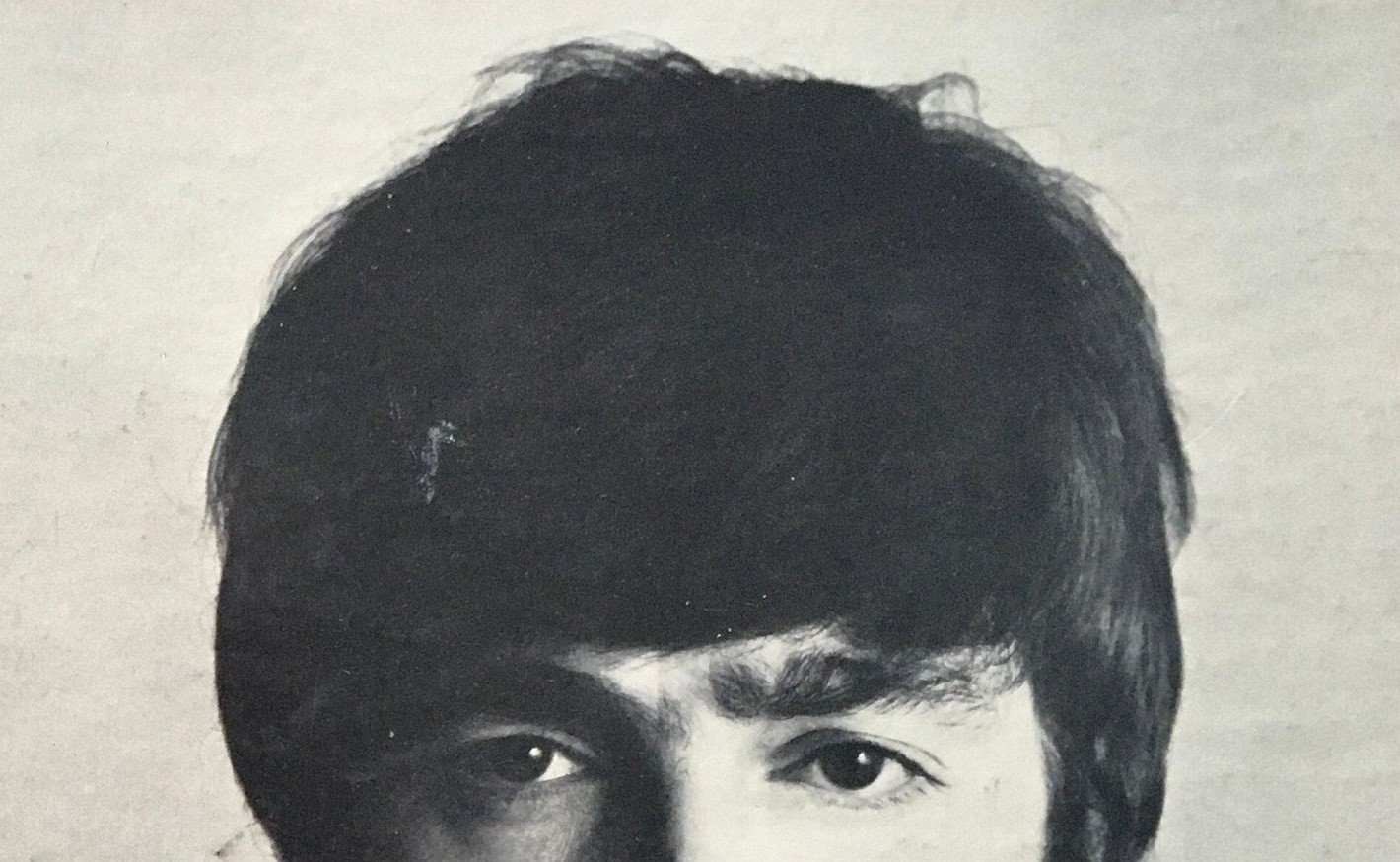 In the final made-up verse in The Beatles version, John gives a last-chance confession of his love for her ("you know that I love you, tell the world I do") and desperately expresses to the world that she is "the best little woman that I've ever had." Whether that was good enough to win his girl over, we'll never know. Maybe we're not supposed to think about that at all. I guess we're just supposed to revel in the feeling of the song. John's "wooo" at the end shows that's he's really not all that concerned about her anyway. In the final made-up verse in The Beatles version, John gives a last-chance confession of his love for her ("you know that I love you, tell the world I do") and desperately expresses to the world that she is "the best little woman that I've ever had." Whether that was good enough to win his girl over, we'll never know. Maybe we're not supposed to think about that at all. I guess we're just supposed to revel in the feeling of the song. John's "wooo" at the end shows that's he's really not all that concerned about her anyway.
American Releases
American audiences first heard the song on July 20th, 1964 on the Capitol album "Something New." To fill out another album release in the US with "something new," they included the two remaining tracks from the British "Long Tall Sally" EP that hadn't been on an album yet, namely "Matchbox" and "Slow Down." This album was released on compact disc on January 21st, 2014, with both the mono and stereo mixes contained on one CD.
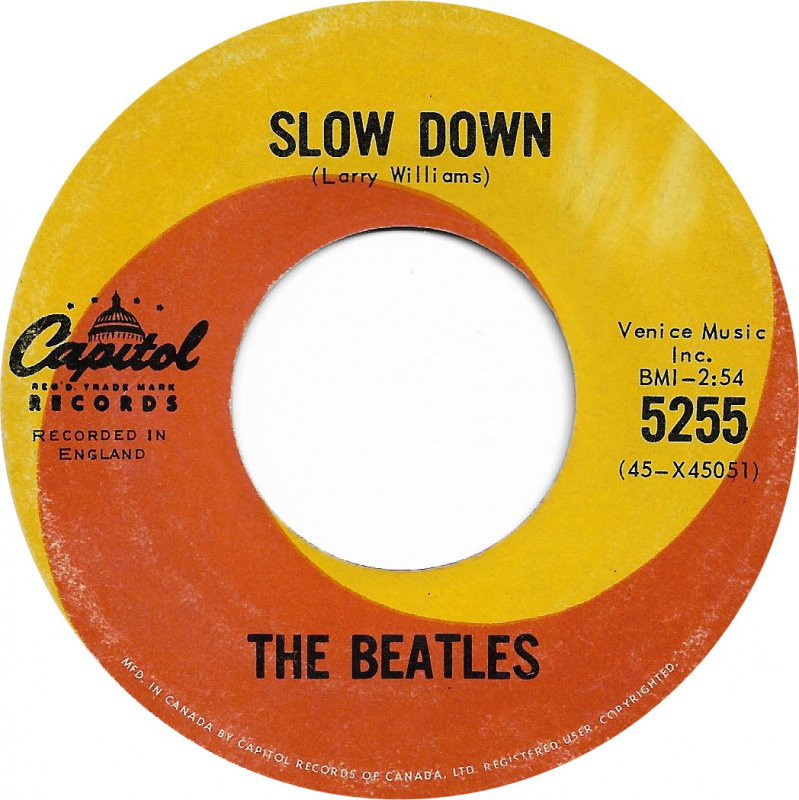 Having released three Beatles singles in July of that year, Capitol thought that the charts could use another single as well. Therefore they issued "Slow Down" and "Matchbox" as a single on August 24th, 1964. Since it was hard for disc jockeys to tell which the "plug" side was, they played them both, which resulted in both songs making the Top 40 on the Billboard Hot 100. While "Matchbox" was the clear winner, peaking at #17, "Slow Down" was hot on its heels, peaking at #25. Having released three Beatles singles in July of that year, Capitol thought that the charts could use another single as well. Therefore they issued "Slow Down" and "Matchbox" as a single on August 24th, 1964. Since it was hard for disc jockeys to tell which the "plug" side was, they played them both, which resulted in both songs making the Top 40 on the Billboard Hot 100. While "Matchbox" was the clear winner, peaking at #17, "Slow Down" was hot on its heels, peaking at #25.
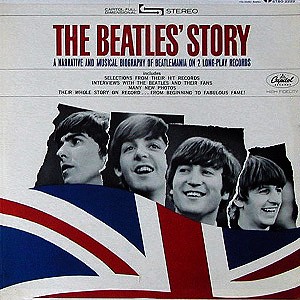 A partial segment of "Slow Down" also appeared as part of the track "Man Behind The Beatles" on the documentary double-album "The Beatles' Story," which was released on November 23rd, 1964. Surprisingly, this documentary album was also released on compact disc on January 21st, 2014, but only as contained in the 13 album box set "The US Albums." A partial segment of "Slow Down" also appeared as part of the track "Man Behind The Beatles" on the documentary double-album "The Beatles' Story," which was released on November 23rd, 1964. Surprisingly, this documentary album was also released on compact disc on January 21st, 2014, but only as contained in the 13 album box set "The US Albums."
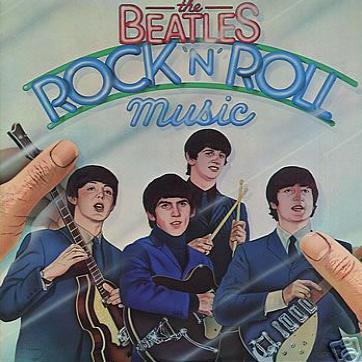 June 7th, 1976 was the next American release of the song on the Capitol double-album set "Rock 'n' Roll Music." George Martin was consulted regarding the preparation of this album and, with access to only the Capitol mixes, decided it was necessary to reverse the right and left channels of the original stereo mix of this song for this album. While the album was a tremendous success at the time, it only stayed in print for a few years in this form. On October 27th, 1980, the double-album was split into two single albums for sale as budget releases. "Slow Down" therefore appeared on "Rock 'n' Roll Music, Volume 1." June 7th, 1976 was the next American release of the song on the Capitol double-album set "Rock 'n' Roll Music." George Martin was consulted regarding the preparation of this album and, with access to only the Capitol mixes, decided it was necessary to reverse the right and left channels of the original stereo mix of this song for this album. While the album was a tremendous success at the time, it only stayed in print for a few years in this form. On October 27th, 1980, the double-album was split into two single albums for sale as budget releases. "Slow Down" therefore appeared on "Rock 'n' Roll Music, Volume 1."
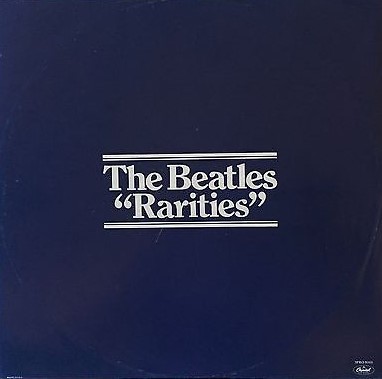 Because of EMI's decision to release a box set that included all of the British Beatles albums as well as an additional album entitled "Rarities" that included songs that did not appear on any British Beatles album, Capitol had initially decided to release this album in America. 2,000 promotional copies of this album were manufactured (#SPRO-8969) and then another unlimited number of advance copies (ESN-SN-12009) were printed in the fall of 1979. "Slow Down" was included on this proposed album which was decided to be abondoned due to the fact that this and most of the songs contained therein were available on other Beatles albums in the US at the time. These promotional albums are very collectible today. Because of EMI's decision to release a box set that included all of the British Beatles albums as well as an additional album entitled "Rarities" that included songs that did not appear on any British Beatles album, Capitol had initially decided to release this album in America. 2,000 promotional copies of this album were manufactured (#SPRO-8969) and then another unlimited number of advance copies (ESN-SN-12009) were printed in the fall of 1979. "Slow Down" was included on this proposed album which was decided to be abondoned due to the fact that this and most of the songs contained therein were available on other Beatles albums in the US at the time. These promotional albums are very collectible today.
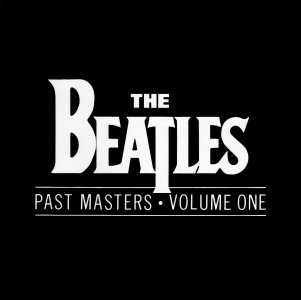 As The Beatles catalog was finally released on compact disc, since "Slow Down" was not featured on any British album, it found its way onto CD on March 7th, 1988 with the release of "Past Masters, Volume One." This album was combined with its companion "Past Masters, Volume Two" for a double-album vinyl release on October 24th, 1988, then as a remastered 2-CD set on September 9th, 2009 and as a remastered vinyl set on November 12th, 2012. As The Beatles catalog was finally released on compact disc, since "Slow Down" was not featured on any British album, it found its way onto CD on March 7th, 1988 with the release of "Past Masters, Volume One." This album was combined with its companion "Past Masters, Volume Two" for a double-album vinyl release on October 24th, 1988, then as a remastered 2-CD set on September 9th, 2009 and as a remastered vinyl set on November 12th, 2012.
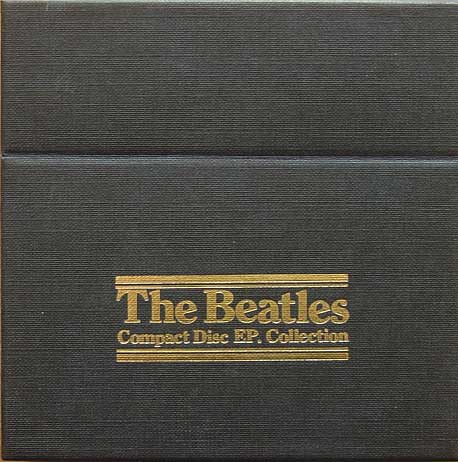 Although the original "Long Tall Sally" EP wasn't officially released in the US at the time, it was included in the Capitol box set "Compact Disc EP Collection," which was released on June 30th, 1992. The mono mix of "Slow Down" appears on this release. Although the original "Long Tall Sally" EP wasn't officially released in the US at the time, it was included in the Capitol box set "Compact Disc EP Collection," which was released on June 30th, 1992. The mono mix of "Slow Down" appears on this release.
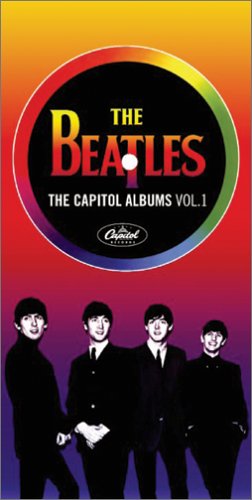 On November 30th, 1994, the album "Live At The BBC" was released, which includes a version of "Slow Down" recorded on July 16th, 1963 for the radio program "Pop Go The Beatles." Then, on November 11th, 2013, this album was remastered, re-packaged and re-released. On November 30th, 1994, the album "Live At The BBC" was released, which includes a version of "Slow Down" recorded on July 16th, 1963 for the radio program "Pop Go The Beatles." Then, on November 11th, 2013, this album was remastered, re-packaged and re-released.
The November 15th, 2004 released box set "The Capitol Albums, Vol. 1" includes both the mono and stereo versions of "Slow Down" as originally heard on the "Something New" album.
September 9th, 2009 saw the release of the CD box set "The Beatles In Mono," which features the stereo mix of the song on its "Mono Masters" disc. The vinyl edition of this box set was first released on September 9th, 2014.
Live Performances
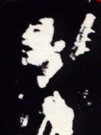 An array of songs by both Little Richard and his protégé Larry Williams were featured among the vast set lists The Beatles performed live in their formative years. While Paul always sang the Little Richard numbers, John always took the lead on the Larry Williams songs. "Slow Down" was among the six The Beatles chose to perform, which was obviously the favorite since it was the first they chose to formally record at EMI. An array of songs by both Little Richard and his protégé Larry Williams were featured among the vast set lists The Beatles performed live in their formative years. While Paul always sang the Little Richard numbers, John always took the lead on the Larry Williams songs. "Slow Down" was among the six The Beatles chose to perform, which was obviously the favorite since it was the first they chose to formally record at EMI.
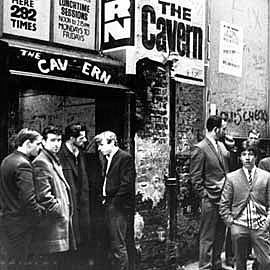 "Slow Down" was performed by the group regularly throughout 1960 and into 1962. It probably became part of their repertoire when they first played Hamburg, Germany from August 17th through November 30th, 1960, as they needed extra material to fill their long working hours. From there, they no doubt featured the song regularly at the Cavern Club in Liverpool as well as their ever growing show schedule. "Slow Down" was performed by the group regularly throughout 1960 and into 1962. It probably became part of their repertoire when they first played Hamburg, Germany from August 17th through November 30th, 1960, as they needed extra material to fill their long working hours. From there, they no doubt featured the song regularly at the Cavern Club in Liverpool as well as their ever growing show schedule.
Although they retired the song by the end of 1962 and their last Hamburg trip, they did record it once for BBC radio on July 16th, 1963, as detailed above. Even though The Beatles revived the song at EMI studios in 1964, they never thought to perform it again.
Conclusion
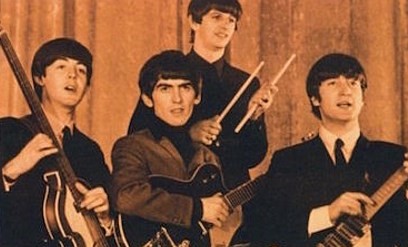 The Beatles' cover of "Slow Down" will never be considered one of their biggest hits and has understandably been omitted from consideration for most compilation albums. Nevertheless, there are many enthusiasts that rightfully claim the song to be one of their favorite Beatles songs. The deciding factor in these claims surely rests on the enthusiastic vocal delivery of John Lennon. While his performance is quite unlike that of the original Larry Williams vocal, he injects so much driving force that it makes us feel we've experienced one of the true inspirations to The Beatles sound. This, of course, was his intention, which worked exceedingly well. The Beatles' cover of "Slow Down" will never be considered one of their biggest hits and has understandably been omitted from consideration for most compilation albums. Nevertheless, there are many enthusiasts that rightfully claim the song to be one of their favorite Beatles songs. The deciding factor in these claims surely rests on the enthusiastic vocal delivery of John Lennon. While his performance is quite unlike that of the original Larry Williams vocal, he injects so much driving force that it makes us feel we've experienced one of the true inspirations to The Beatles sound. This, of course, was his intention, which worked exceedingly well.
Song Summary
"Slow Down"
Written by: Larry Williams
-
Song Written: January 1958 approx.
-
Song Recorded: June 1st and 4th, 1964
-
First US Release Date: July 20, 1964
-
-
US Single Release: Capitol #5255 (b-side to "Matchbox")
-
Highest Chart Position: #25
-
British Album Release: Parlophone #PCSP 719 "Rock 'n' Roll Music"
-
Length: 2:55
-
Key: C major
-
Producer: George Martin
-
Engineers: Norman Smith, Ken Scott
Instrumentation (most likely):
-
John Lennon - Lead Vocals, Rhythm Guitar (1964 Rickenbacker 325)
-
Paul McCartney - Bass Guitar (1963 Hofner 500/1)
-
George Harrison - Lead Guitar (1963 Gretsch 6119 Tennessean)
-
Ringo Starr - Drums (1964 Ludwig Super Classic Black Oyster Pearl)
-
George Martin - Piano (1905 Steinway Vertegrand upright)
Written and compiled by Dave Rybaczewski
|
IF YOU WOULD LIKE TO MAKE A DONATION TO KEEP THIS WEBSITE UP AND RUNNING, PLEASE CLICK BELOW!
|